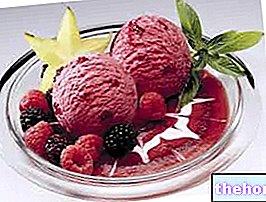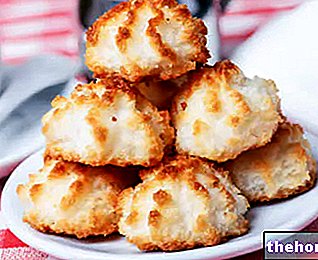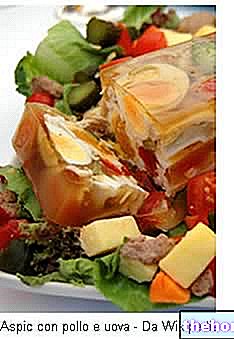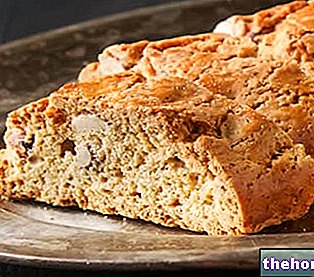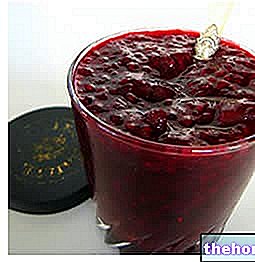In the article we will refer exclusively to the sweet strudel, especially the apple strudel, excluding the particular versions (pear, rhubarb, blueberry, ricotta, jam, coconut strudel, etc.) and the salty ones to be used as an appetizer or first course (eg vegetable strudel, sauerkraut etc.).
Generality
The strudel is a typical dessert of alpine mountain cuisine; as far as Italy is concerned, it is mainly produced in the regions: Trentino Alto Adige, Veneto and Friuli Venezia Giulia.

Thinking in historical terms, the strudel seems to be the great-grandson of a much older dessert: the baklava. This preparation is present in the mountainous areas of central Europe, the Balkan peninsula and Greece, and in the Mediterranean side that affects the Middle East, North Africa and southern Spain. Scholars therefore linked the dessert recipe to the surface of the Eastern Roman Empire. So much for the traditional dessert!
There are many variations and recipes of apple strudel, but they all share a mixture (pastry or shortcrust pastry) and a filling based on the well-known fruit (apples from Val di Non par excellence). Other ingredients commonly used are: sugar, raisins, pine nuts, walnuts, cinnamon, lemon peel, liqueurs or spirits; sometimes, it is also possible to find chocolate, breadcrumbs, rhubarb, berries, etc. in the strudel.
The traditional strudel (apple strudel) is a medium calorie dessert, even if the nutritional characteristics vary considerably from recipe to recipe; it is not a suitable food for slimming diets or those against metabolic diseases (type 2 diabetes mellitus and hyperlipemia).
Strudel is not a particularly difficult dessert to prepare at home, even if, as often happens, the distinction between a good strudel and a mediocre dessert lies in the attention to detail. Some small examples are: the degree of processing of the pasta - which must be very low to prevent the heat of the hands from altering its consistency (it is therefore advisable to wash them in cold water) - and the thickness of the pasta, which must be thinner possible. In this regard, an old Austrian saying suggests that "the puff pastry for the strudel is ready only when it is so transparent that by placing a love letter under it you have to read the words!'
Quick and Easy Puff Pastry Strudel
Problems with playing the video? Reload the video from youtube.
- Go to the Video Page
- Go to the Video Recipes Section
- Watch the video on youtube
One of the classic recipes for apple strudel
To provide a more precise indication on the formulation of this dish, we will summarize below one of the most common recipes for apple strudel:

Nutritional values (per 100 g of edible portion)
Ingredients for the strudel
- For the strudel dough: 300g of flour type 00, 200g of granulated sugar, 100g of butter, 1 egg, butter and flour to taste for the baking tray, salt to taste.
- For the strudel filling: 1000g of apples Golden Delicius whole, 200g of sultanas, 50g of pine nuts, 6 chopped walnut kernels, 1 grated lemon peel, cinnamon to taste, milk to taste, grappa to taste.
- To complete the strudel: 1 chicken egg yolk, powdered sugar to taste.
Procedure for the strudel
Form a dough based on egg, flour, a pinch of salt, softened butter in pieces, a little milk and a little grappa. Knead until the mixture is smooth and elastic, then let it rest for 30 ". Meanwhile, peel and cut the apples into wedges, add the chopped walnuts, the sultanas, the pine nuts, the granulated sugar, the lemon zest, a pinch of cinnamon and leave to macerate for 20 ".
Roll out the dough into a thin rectangular sheet, pour the macerated filling into it, leaving a 5cm border all around; then close (using the clean edges and, if necessary, eliminating the excess) obtaining the classic "loaf" shape. ". Place the strudel on a greased and floured plate, brush the surface with beaten egg yolk and melted butter. Finally, use a small knife (or scissors) to make "chimneys" (small cuts) through which the cooking vapors will come out.
Bake in a preheated oven at 200 ° C for 40 "(in this case, an electric oven); serve the sliced strudel sprinkled with icing sugar.
Video Recipe for the Light variant - Apple Strudel with Pasta Povera
Nutritional characteristics
Strudel is a traditional dessert with nutritional characteristics of: medium-high energy intake, high content of simple carbohydrates and prevalence of saturated fatty acids over the total (not too abundant). These aspects make the strudel a product not very suitable for the dietary regimen of overweight subjects, of those suffering from type 2 diabetes mellitus and, in excessive portions, also of subjects with hyperlipemia (hypertriglyceridemia and / or hypercholesterolemia). Among other things, the strudel recipe illustrated above DOES NOT include the use of puff pastry; otherwise, the intake of saturated fat and cholesterol would be higher than that mentioned.
Proteins are scarce and dietary fiber seems sufficient. From a salt and vitamin point of view, the strudel does not demonstrate any noteworthy level.
Other Foods - Sweets Aspic Cantucci Caramel Candied Citron Chocolate White Chocolate Codette Chantilly Cream Custard Crepes Ice Cream Granita Ice Cream Jam and Jam Marshmallow Marzipan Honey Mustard Nutella Sponge Cake Pandoro Panettone Shortcrust Pastry Sorbet Strudel Nougat Wafer Zabaione Iced Sugar OTHER ITEMS Alcoholic Alcohol Categories Meat Cereals and derivatives Sweeteners Sweets Offal Fruit Dried fruit Milk and derivatives Legumes Oils and fats Fish and fishery products Salami Spices Vegetables Health recipes Appetizers Bread, Pizza and Brioche First courses Second courses Vegetables and Salads Sweets and Desserts Ice creams and sorbets Syrups, Spirits and grappas Basic Preparations ---- In the Kitchen with Leftovers Carnival Recipes Christmas Recipes Diet Recipes Light Recipes Women's Day, Mum, Dad Functional Recipes International Recipes Easter Recipes Recipes for Celiacs Recipes for Diabetics Recipes for the Holidays Recipes for S an Valentino Vegetarian Recipes Protein Recipes Regional Recipes Vegan Recipes

